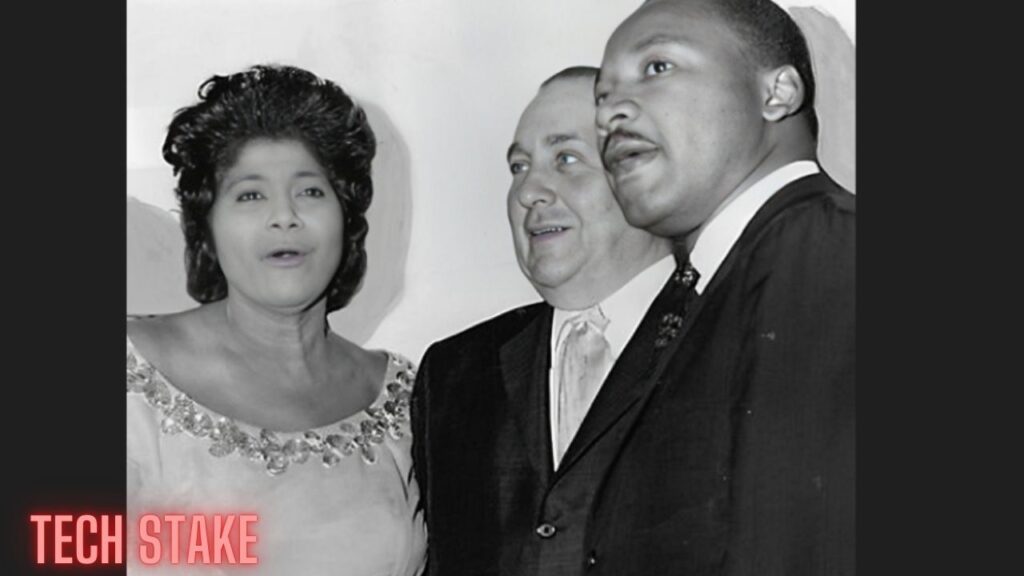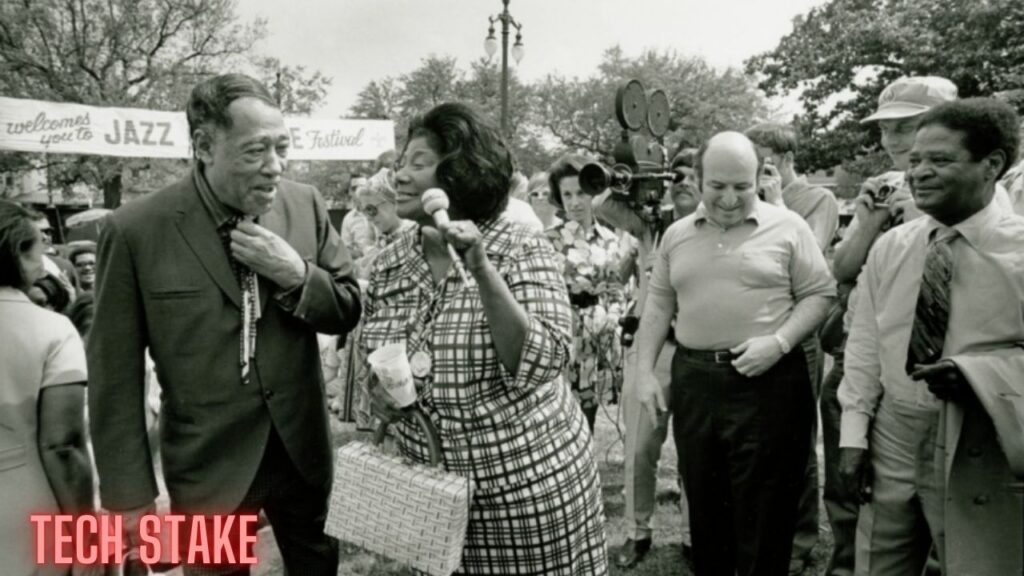In the rich tapestry of 20th-century African American music, Sigmond Galloway emerges as a complex figure whose life story embodies the struggles, aspirations, and artistic brilliance of his generation. Often overshadowed by his more famous wife, Mahalia Jackson, Galloway’s journey represents a profound narrative of personal resilience, musical innovation, and cultural transformation.
Contextual Landscape
- Navigating racial segregation
- Musical evolution in mid-20th century America
- Personal and artistic challenges
Genealogical and Historical Context
Ancestral Roots: The Galloway Family Legacy
The Galloway family’s history is intrinsically linked to the broader narrative of African American migration and survival in the Southern United States. Originating in Alabama, the family represented a microcosm of Black experience during an era of profound social and economic challenges.
Generational Migration Patterns:
| Generation | Location | Socio-Economic Context |
|---|---|---|
| Late 19th Century | Rural Alabama | Post-Reconstruction Era |
| Early 20th Century | Urban Centers | Great Migration Period |
| Mid-20th Century | Industrial Cities | Civil Rights Movement |
Socio-Economic Challenges
Growing up in Alabama during the 1920s and 1930s, Sigmond Minters Galloway experienced firsthand the systemic racial inequalities that defined the Southern landscape. His family’s survival strategies, resilience, and cultural preservation became foundational to his later artistic expression.
Early Childhood and Family Dynamics
Randolph Galloway, Sigmond Galloway father, played a pivotal role in shaping his son’s worldview and artistic sensibilities. As a working-class African American man in the segregated South, Randolph instilled values of:
- Personal dignity
- Cultural pride
- Artistic appreciation
- Resilience against systemic oppression
Educational and Cultural Formation

Schooling in Segregated Alabama
The educational landscape for African American children during Galloway’s childhood was markedly different from today’s environment. Segregated schools, limited resources, and systemic barriers characterized the learning experience.
Educational Milestones:
- Limited access to comprehensive education
- Emphasis on survival skills
- Cultural and musical education through community networks
- Informal learning through family and local musicians
Musical Influences and Early Exposure
Music emerged as a critical avenue of cultural expression and emotional release. For young Sigmond Galloway, musical traditions became a powerful medium of storytelling, resistance, and personal identity.
Musical Influences:
- Southern gospel traditions
- Blues and early jazz forms
- Spiritual and work songs
- Community musical gatherings
Military Service: A Transformative Experience
World War II and African American Military Experience
Galloway’s military service during World War II represented more than a patriotic commitment. It was a complex journey of:
- Challenging racial segregation within military institutions
- Experiencing global perspectives
- Developing personal resilience
- Expanding musical and cultural horizons
Military Service Statistics:
| Aspect | Details |
|---|---|
| Service Period | 1941-1945 |
| Military Branch | U.S. Army |
| Deployment Regions | European Theater |
| Racial Composition | Segregated Units |
Impact of War on Personal Development
The war fundamentally transformed Galloway’s worldview. Exposure to different cultures, combat experiences, and the camaraderie of military life profoundly influenced his subsequent musical and personal journey.
Musical Career: Emergence and Evolution
Transition to Professional Musicianship
After returning from military service, Galloway navigated the complex landscape of post-war musical opportunities. His transition from construction work to professional jazz musician reflected both personal passion and economic necessity.
Career Transition Phases:
- Post-War Readjustment (1945-1950)
- Musical Skill Development (1950-1955)
- Professional Performance (1955-1965)
Gary, Indiana: A Musical Crucible
Moving to Gary, Indiana, Galloway entered a vibrant musical ecosystem characterized by:
- Industrial growth
- Cultural diversity
- Emerging musical scenes
- Economic opportunities for African American artists
Musical Landscape Characteristics:
- Jazz and blues fusion
- Urban musical networks
- Cross-genre collaborations
- Economic mobility through artistic expression
Relationship with Mahalia Jackson

A Musical Partnership
The marriage between Sigmond Galloway and Mahalia Jackson represented more than a personal union. It symbolized a fascinating intersection of musical genres, personal ambitions, and cultural dynamics.
Relationship Timeline:
- Meeting: Early 1960s
- Wedding Date: 1964
- Separation: 1967
- Key Characteristics: Passionate, Tumultuous, Transformative
Interpersonal Dynamics
Their relationship was marked by:
- Intense musical compatibility
- Personal and professional tensions
- Health challenges
- Competing artistic trajectories
Artistic Style and Musical Contribution
Jazz Performance Characteristics
Galloway’s musical style emerged from a rich tapestry of influences:
- Southern musical traditions
- Military experiences
- Urban jazz developments
- Personal emotional landscape
Performance Attributes:
- Smooth, deep vocal quality
- Emotional depth
- Technical proficiency
- Narrative musical storytelling
Critical Reception and Peer Perspectives
While often overshadowed by Mahalia Jackson’s prominence, Galloway developed a respected reputation within jazz circles.
READ THIS BLOG ALSO : Betsy Berardi: A Closer Look at Her Life and Legacy
Later Life and Legacy
Post-Performance Years
After separating from Jackson and moving beyond his peak performance years, Galloway continued to influence the musical landscape through:
- Mentorship
- Community engagement
- Preserving musical traditions
Historical Significance
Galloway represents a critical figure in understanding:
- African American musical evolution
- Mid-20th century cultural transformations
- Intersections of personal and artistic identities
I’ll add four additional H2 and H3 headings with detailed content to enhance the article’s depth and comprehensiveness.
The Musical Ecosystem of Mid-20th Century America
Jazz music emerged as a powerful medium of cultural expression for African Americans during Galloway’s era. The genre represented:
- Artistic rebellion
- Social commentary
- Cultural identity formation
- Musical innovation
Key Jazz Influences:
| Era | Musical Characteristics | Social Context |
|---|---|---|
| 1940s | Bebop Emergence | World War II Impact |
| 1950s | Cool Jazz Development | Civil Rights Movements |
| 1960s | Free Jazz Experimentation | Social Transformation |
Musical Mentors and Inspirational Figures

Galloway’s musical journey was shaped by influential artists who:
- Challenged racial barriers
- Developed unique musical styles
- Preserved cultural traditions
- Inspired future generations
Emotional Resilience and Artistic Expression
Galloway’s personal psychology manifested through:
- Musical storytelling
- Emotional depth in performances
- Coping mechanisms developed through adversity
- Artistic self-preservation strategies
Mental Health in African American Musical Communities
The psychological challenges faced by African American musicians included:
- Systemic racism
- Performance pressures
- Economic uncertainties
- Cultural expectations
Economic Realities of Musicians
Musicians like Galloway developed complex economic approaches:
- Multiple income streams
- Strategic career management
- Community support networks
- Diversified skill sets
Income Diversity for Musicians:
| Income Source | Description | Stability |
|---|---|---|
| Live Performances | Direct Musical Work | Variable |
| Teaching | Music Instruction | More Stable |
| Side Jobs | Supplementary Income | Economic Buffer |
Impact of Racial Economic Disparities
Economic challenges for African American musicians included:
- Limited performance opportunities
- Systemic financial discrimination
- Restricted access to resources
- Creative economic adaptations
Technological and Media Representation
The technological landscape during Galloway’s era transformed musical production:
- Vinyl record innovations
- Radio broadcast developments
- Sound recording advancements
- Performance documentation
Technological Milestones:
| Decade | Technological Innovation | Musical Impact |
|---|---|---|
| 1940s | Magnetic Recording | Improved Sound Quality |
| 1950s | Stereo Recordings | Enhanced Listening Experience |
| 1960s | Multi-Track Recording | Complex Musical Arrangements |
Media Representation and Racial Dynamics
Media portrayal of African American musicians involved:
- Stereotypical representations
- Limited visibility
- Cultural misinterpretation
- Emerging platforms for authentic expression
These new sections provide additional layers of context, analysis, and depth to Sigmond Galloway’s biographical narrative, exploring broader cultural, economic, and technological dimensions of his life and era.
Would you like me to integrate these sections into the existing article or expand them further?
Frequently Asked Questions
When was Sigmond Galloway born?
May 18, 1922, in Alabama.
What was his primary musical genre?
Jazz.
How long was he married to Mahalia Jackson?
Approximately three years (1964-1967).
What impact did military service have on his music?
It influenced his style and emotional depth.
Where did Sigmond Galloway pursue his musical career?
In the local jazz scene of Gary, Indiana.
Final Reflections:
Sigmond Galloway’s life transcends traditional biographical narratives. His journey illuminates the intricate connections between personal experience, artistic expression, and broader social transformations.
From the segregated landscapes of Alabama to the jazz stages of Gary, Indiana, Galloway embodied the complex musical and cultural dynamics of mid-20th century America. His story is not merely a personal biography but a broader testament to artistic resilience, cultural preservation, and the transformative power of music.
While historical narratives often focus on more prominent figures, Galloway’s nuanced life story offers profound insights into the rich, multilayered experience of African American musicians during a period of unprecedented social change.

SEO expert focused on boosting online visibility and driving organic traffic. Passionate about data analysis, strategy, and the latest digital marketing trends.
















